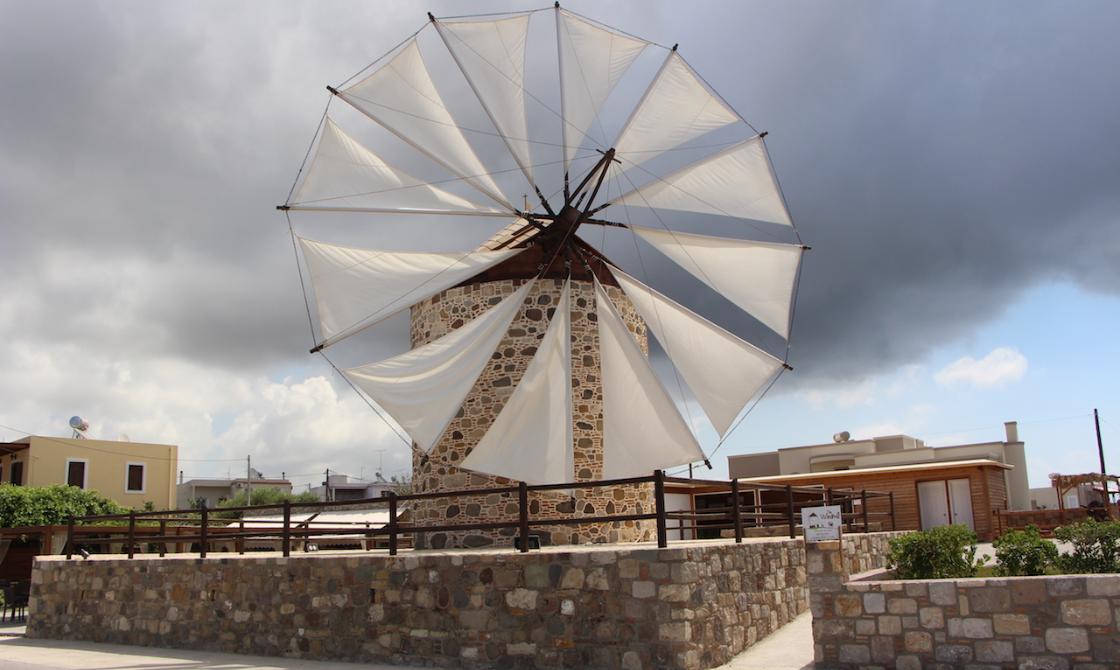
Windmill of Antimachia
The Traditional Windmill of Antimachia: A Journey into Kos's Milling Heritage
Nestled amidst the serene landscape of Kos Island, a few kilometers inland from the coastal town of Mastihari and approximately 25 kilometers from Kos Town, lies the charming village of Antimachia. Here, amidst the traditional houses and quiet streets, stands a remarkable testament to the island's agricultural past: the Traditional Windmill of Antimachia. This historic landmark, dating back to the 19th century, is not merely a relic of a bygone era; it's the last working windmill on the island, a living museum that offers a fascinating glimpse into Kos's milling heritage and the ingenuity of its people.
A History Written in the Wind:
Kos Island has a long and intimate relationship with wind power. The island's geographical location and consistent Meltemi winds, blowing strong and steady throughout much of the year, have made it an ideal environment for harnessing this natural energy. For centuries, windmills have dotted the Kos landscape, playing a crucial role in the local economy and agricultural practices. These structures were primarily used for grinding locally grown grains, such as wheat and barley, into flour—a staple food for the island's inhabitants.
Antimachia: A Village of a Hundred Sails:
Before the ravages of the Second World War, the village of Antimachia was a veritable "windmill village," a scene straight out of a postcard. It's estimated that around 100 windmills once graced the fields surrounding the village, their sails turning rhythmically in the wind, creating a picturesque and productive landscape. These windmills were more than just functional buildings; they were an integral part of the community's identity, a symbol of their self-sufficiency and connection to the land. They provided livelihoods for millers and their families, and their presence shaped the social and economic fabric of the village.
The Last Standing Sentinel:
Sadly, the passage of time and the advent of modern milling technologies have led to the decline of windmills across Kos. Today, only one remains in working condition: the Traditional Windmill of Antimachia. This well-preserved landmark stands as a poignant reminder of a disappearing way of life. It's a tangible link to the past, offering visitors a unique opportunity to witness the traditional methods of grain grinding that sustained generations of Kos islanders.
A Visit to the Past:
Stepping inside the Traditional Windmill is like stepping back in time. The intricate wooden machinery, the heavy millstones, and the scent of grain create a sensory experience that transports you to another era. Visitors can often witness demonstrations of the milling process, gaining a firsthand understanding of how these ingenious structures harnessed the power of the wind to produce flour. The windmill is usually open to visitors during the tourist season, although it's always a good idea to check local listings for current opening hours.
More Than Just a Mill:
The Traditional Windmill of Antimachia represents more than just a method of grinding grain. It symbolizes the resourcefulness and resilience of the people of Kos, their deep connection to the land, and their ability to adapt to the natural environment. It's a valuable piece of cultural heritage that deserves to be preserved and appreciated for generations to come. A visit to this historic landmark is a must for anyone seeking a deeper understanding of Kos Island's history, culture, and traditions.
